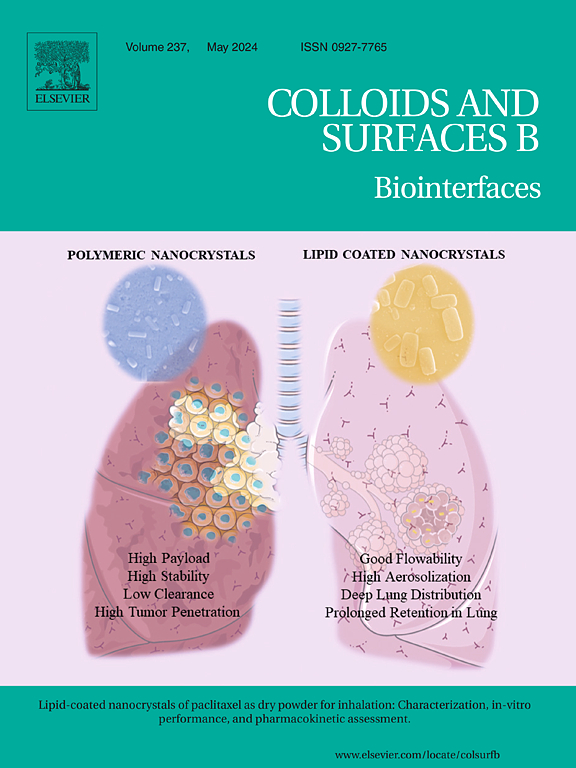Fucoidan-chitosan nanocarriers for anticancer therapy through chemodynamic, photothermal, and glucose starvation strategies
IF 5.4
2区 医学
Q1 BIOPHYSICS
引用次数: 0
Abstract
The tumour microenvironment (TME) presents a distinctive set of challenges and opportunities in the context of targeted cancer therapies, offering potential avenues for reducing non-specific cell death and side effects on normal cells. By combining chemodynamic therapy, starvation therapy, and photothermal therapy, our approach aims to activate drug release and generate reactive oxygen species within the TME. Specifically, we developed a fucoidan-chitosan (F/CS) nanocarrier loaded with 3,3′,5,5′-tetramethylbenzidine (T), Prussian blue (P), and glucose oxidase (GOx) (F/CS@TPGOx). It has been reported that fucoidan and chitosan target P-selectin and the glucose-rich microenvironment of pathological cancer. Furthermore, F/CS@TPGOx at a concentration of 4 µg/mL was observed to reduce cancer cell viability to less than 20 % following a four-hour incubation period. This indicates that fucoidan, the carrier, exhibits anticancer activity that is more pronounced than that observed in conventional anticancer nanocarriers. The findings demonstrated the efficacy of F/CS@TPGOx in cancer cell death in both in vitro and in vivo settings. This suggests F/CS@TPGOx as a promising material for targeted cancer therapy with the potential to be used in clinical biomedicine as a therapeutic platform with high efficacy and minimal side effects.
求助全文
约1分钟内获得全文
求助全文
来源期刊

Colloids and Surfaces B: Biointerfaces
生物-材料科学:生物材料
CiteScore
11.10
自引率
3.40%
发文量
730
审稿时长
42 days
期刊介绍:
Colloids and Surfaces B: Biointerfaces is an international journal devoted to fundamental and applied research on colloid and interfacial phenomena in relation to systems of biological origin, having particular relevance to the medical, pharmaceutical, biotechnological, food and cosmetic fields.
Submissions that: (1) deal solely with biological phenomena and do not describe the physico-chemical or colloid-chemical background and/or mechanism of the phenomena, and (2) deal solely with colloid/interfacial phenomena and do not have appropriate biological content or relevance, are outside the scope of the journal and will not be considered for publication.
The journal publishes regular research papers, reviews, short communications and invited perspective articles, called BioInterface Perspectives. The BioInterface Perspective provide researchers the opportunity to review their own work, as well as provide insight into the work of others that inspired and influenced the author. Regular articles should have a maximum total length of 6,000 words. In addition, a (combined) maximum of 8 normal-sized figures and/or tables is allowed (so for instance 3 tables and 5 figures). For multiple-panel figures each set of two panels equates to one figure. Short communications should not exceed half of the above. It is required to give on the article cover page a short statistical summary of the article listing the total number of words and tables/figures.
 求助内容:
求助内容: 应助结果提醒方式:
应助结果提醒方式:


